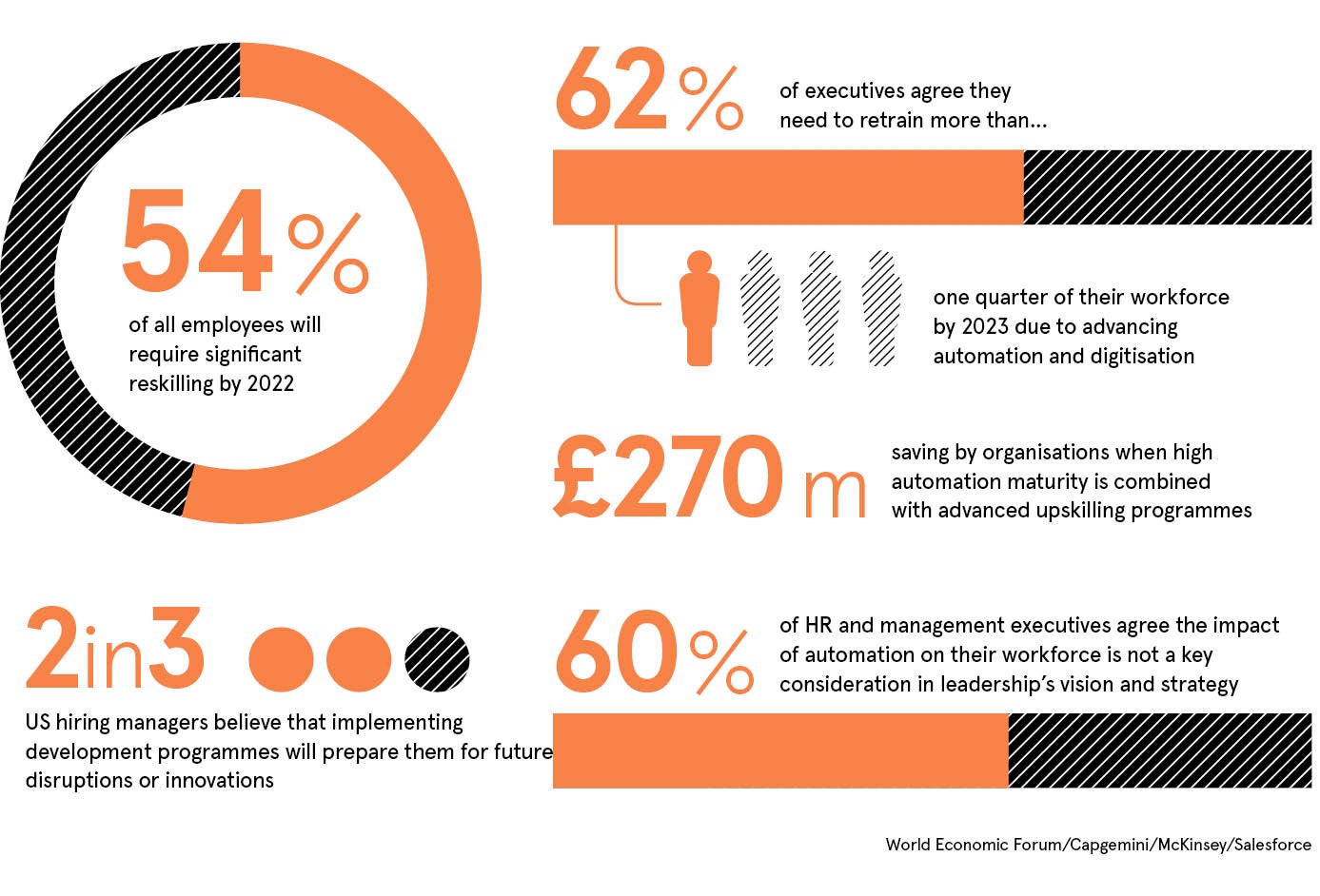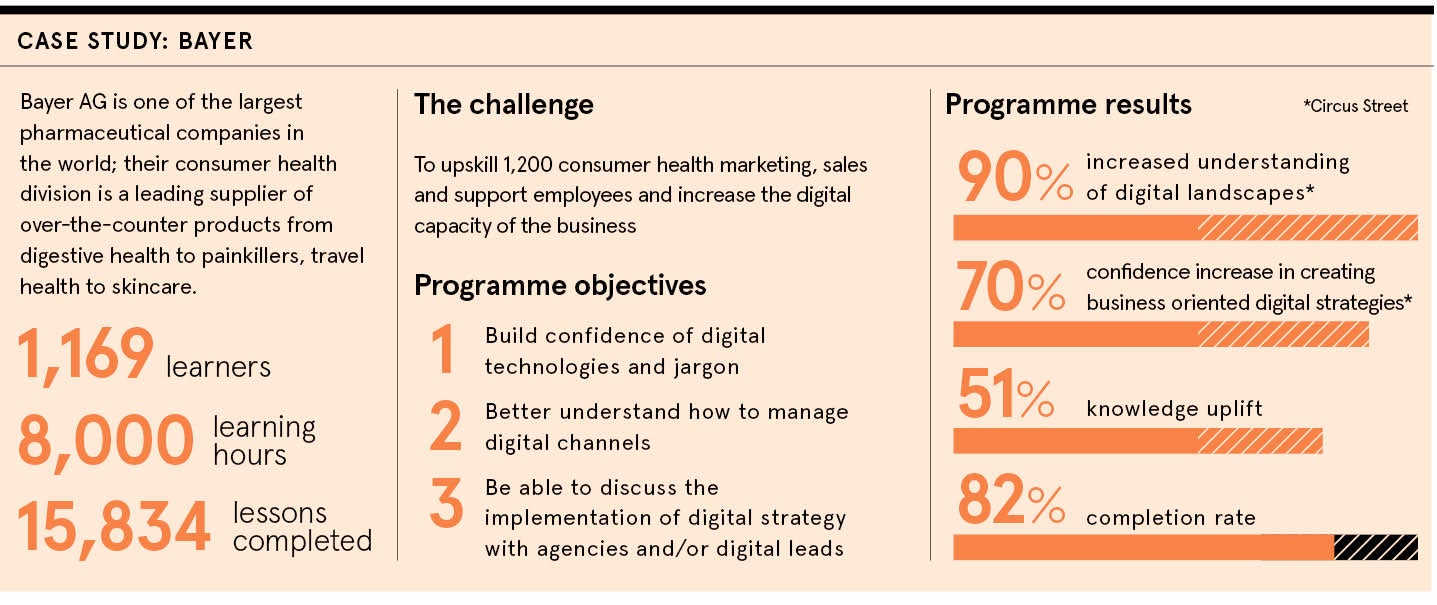The world of work is changing. Against a backdrop of the fourth industrial revolution and digital transformation so too is the way employees acquire the skills and knowledge they need to stay abreast of that change and deliver their best performance.
According to human resources analyst Josh Bersin, 80 per cent of all companies rate their business as complex or highly complex for their employees, who therefore need new skills or training to stay relevant in an increasingly always-on digital world.
However, employees also have less time. Research from Bersin by Deloitte found that in a given week employees take less than 25 minutes of time to learn. In a shifting business landscape, the window within which people can realistically learn is really small. That’s the environment in which learning is trying to flourish and that’s why it needs to be engaging.
Understanding how learning works in organisations is a huge challenge for business leaders. The ‘one-size-fits-all’ approach doesn’t work anymore
Learning that works
Understanding how learning works in their organisation and the type of learning they should be creating is a huge challenge for business leaders. The days of traditional classroom-based group training sessions are over; the one-size-fits-all approach doesn’t work.
Now employees engage with learning and development that is tailored to their individual needs, flexible, available on demand and delivering “snackable” content. It also has to be fun and easy to apply.
The Canadian philosopher and communications theorist Marshall McLuhan once said: “Anyone who tries to make a distinction between education and entertainment doesn’t know the first thing about either.”
For Circus Street, a company that has been described as the “Netflix of learning”, this has been a guiding principle.
Historically, companies started to use online learning because it was cost effective. It got lots of people up to speed on things like compliance and health and safety very quickly.
However, the motivation for employees to complete the training was often the threat of getting fired if they didn’t. In addition, people’s experience of online learning has been quite poor, so it needed to be reinvented and transformed into something that can be applied to more business-critical subjects which people will engage with and apply to their role.
Modern learning solutions recognise that truly mastering a subject means putting what you’ve learnt into practice. Learning has the most impact when it is most required. And with digital learning you can offer a greater variety of content to lots of different users and enable them to access it in multiple environments, on a train, at home, on smartphones and at the very moment when it is most beneficial.
Done well, this generates high levels of engagement because it is valuable for both the employee and the business.
Age is no barrier to learning
While the assumption is younger digital natives will race ahead of their older colleagues in applying digital learning to their job, that’s not always the case.
At Circus Street, we work with organisations that now have five or six generations of employees to engage with learning. There is a common perception that older employees find technology a barrier to learning, but that’s not the case if technology is simple and easy to use. And as the employees with the most experience, they have many skills their younger peers don’t yet possess.
We found that when older employees, who are experienced in the core subjects, were introduced to digital learning, they were able to put this new knowledge into context and apply it to their jobs much faster. Yes, younger people know a lot about technology, but without that deeper knowledge of the core subjects, such as sales, marketing and management, it can take them longer to apply their digital learning.
Benefits of continuous learning
In this age of digital transformation, creating a continuous learning environment is more important than ever and this has led many learning and development functions across organisations to become much more strategic, ensuring learning is tailored to the needs of the organisation and, crucially, engages the learner.
Initially, an effective learning and development strategy is derived from the needs of the business, leading to the creation of a learning culture and learning programmes to meet those business objectives. Learning that is closely aligned to business objectives is more easily aligned to the objectives of individual employees in relation to their role or position in a team.
Businesses that invest in this type of learning expect to see a return. The clients we work with have a clear set of desired outcomes, for example, raising the floor in terms of injecting knowledge into the business, raising the ceiling in terms of increasing performance in specific areas, driving innovation, and attracting and retaining top talent.
Tracking development
For each of these desired outcomes, we identify a set of trackable behaviours and changes that as a result of our learning programmes lead to those goals. For example, in raising the floor of knowledge, a trackable change could be increased confidence levels. In raising the ceiling of knowledge, it might be improvements to the way solutions are implemented. With talent retention, the changes would be higher employee engagement, lower attrition rates and higher quality hires.
At a time of great uncertainty for business, it is at least certain that learning and development will continue to evolve, becoming increasingly decentralised, with people finding a multitude of ways to access learning content, for example, online via YouTube and Wikipedia, and by sharing information with colleagues.
However, alongside this deconstructed in-the-workflow-style learning model, companies will also need structured, co-ordinated digital learning programmes that bring everyone up to speed on certain things. We will see a combination of learning styles and higher quality, engaging, structured learning programmes that really connect with the learner. All this will lead to the Experience API (xAPI), a digital software specification that records, tracks and co-ordinates all types of learning experiences.
Future learning strategies
As Guillermo Miranda, chief learning officer at IBM, said: “The learning architecture of today is like digital marketing. It embraces many types of content, collects data interactions and activities, uses intelligent systems to promote content and monitor employee usage, and is personalised for every job function.”
It’s an analogy that resonates with Circus Street. And in helping businesses to upskill and future-proof their workforce, it is how we operate.
For more information please visit circusstreet.com
Learning that works







